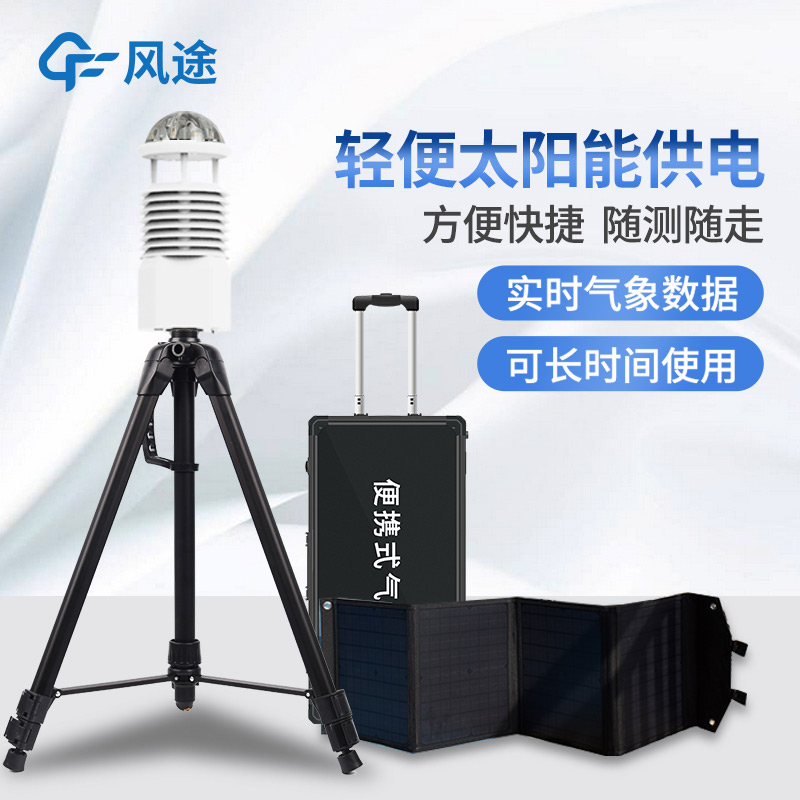Tianqiong Sensor IOT Technology Co., Ltd
Sales Manager:Ms. Emily Wang
Cel,Whatsapp,Wechat:+86 15898932201
Email:info@fengtutec.com
Add:No. 155 Optoelectronic Industry Accelerator, Gaoxin District, Weifang, Shandong, China

Sales Manager:Ms. Emily Wang
Cel,Whatsapp,Wechat:+86 15898932201
Email:info@fengtutec.com
Add:No. 155 Optoelectronic Industry Accelerator, Gaoxin District, Weifang, Shandong, China
time:2025-05-13 09:41:15 source:Weather Station viewed:191 time
With the continuous progress of science and technology, refined meteorological monitoring has become an important development direction of modern meteorological services. The purpose of refined meteorological monitoring is to obtain more accurate, detailed, and high spatio-temporal resolution meteorological data, so as to more accurately predict weather changes and provide early warnings of natural disasters. It provides more valuable meteorological information for many fields such as agriculture, transportation, environmental protection, and urban planning, thus better serving social and economic development and people's travel.
Meteorological instruments, as key tools for refined meteorological monitoring, come in a wide variety of types with different functions, jointly forming a complete meteorological monitoring system.
The Portable Weather Station is characterized by its small size, portability, integrated functions, and easy operation. It integrates multiple high-precision sensors for temperature, humidity, wind speed, wind direction, air pressure, etc. It has functions such as data storage, display, and wireless transmission. It is suitable for scenarios such as field emergency monitoring, scientific research investigations, outdoor sports, agricultural and forestry production, and natural disaster rescue. It can be quickly deployed and provide real-time meteorological data, making up for the deficiencies of fixed weather stations.
Automatic weather observation stations can automatically, continuously, and in real time monitor multiple meteorological elements, such as temperature, humidity, air pressure, wind speed, wind direction, rainfall, etc. Generally, they are composed of sensors, data collectors, communication modules, power supply systems, etc. They can operate unattended and stably for a long time, providing a large amount of basic data for weather forecasting, climate analysis, and so on.
Agricultural weather stations focus on monitoring meteorological elements related to agriculture, such as leaf surface humidity, photosynthetically active radiation, soil temperature and humidity, carbon dioxide concentration, etc. They meet the refined needs of agricultural production for meteorological information, help farmers reasonably arrange agricultural activities, improve crop yield and quality, and achieve refined management and precise operation in agriculture.
There is also a traffic meteorological monitoring system, which is mainly used to monitor meteorological factors affecting traffic, such as visibility, road surface conditions, etc., providing decision-making support for traffic management departments and ensuring traffic safety. And meteorological instruments for environmental monitoring can monitor the concentration of pollutants in the atmosphere, acid rain, etc., providing data basis for environmental protection and pollution control.

With the continuous progress of science and technology, refined meteorological monitoring has become an important development direction of modern meteorological services. The purpose of refined meteorological monitoring is to obtain more accurate, detailed, and high spatio-temporal resolution meteor...
The FT-WQX6 micro weather sensor is a highly integrated device that combines multiple meteorological parameter measurement functions. Its key feature is the integration of six basic meteorological parameters—ambient temperature, relative humidity, wind speed, wind direction, atmospheric pressure, a...
With the booming development of ecotourism, scenic weather stations have become common devices in major tourist attractions and ecological parks (such as artificial wetlands, ecological parks, botanical gardens, etc.). It is dedicated to the all - day automatic online collection of air cleanliness i...
A Cellular Weather Station is a highly integrated, portable meteorological observation device capable of real-time monitoring of multiple environmental and meteorological parameters, providing flexible data support for field monitoring, emergency response, scientific research, education, and other f...